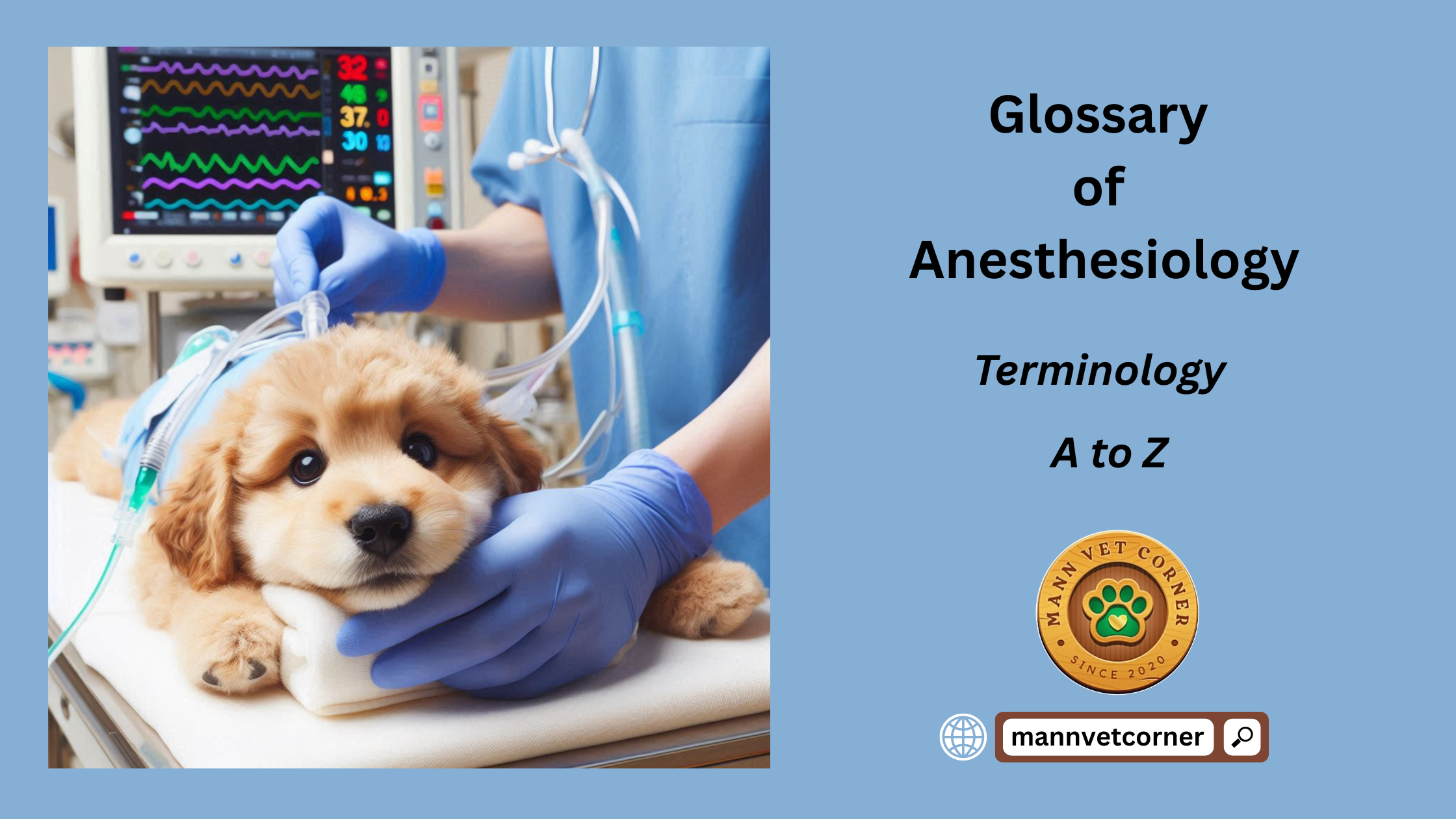This is a comprehensive glossary of anesthesiology terminology, organized alphabetically from A to Z. Given your emphasis on including all terms related to anesthesiology without missing any, I’ve aimed to provide an extensive list covering key concepts, techniques, drugs, equipment, monitoring methods, and complications commonly associated with the field.
Anesthesiology Terminology (A to Z)
A
- Adjuvant: Medication enhancing anesthetic or analgesic effects.
- Airway: Passage for breathing, critical in anesthesia management.
- Airway management: Techniques to secure breathing during anesthesia.
- Amnesia: Loss of memory induced by anesthetics.
- Analgesia: Pain relief without loss of consciousness.
- Anesthesia: State of controlled, reversible unconsciousness or pain relief.
- Anesthesia awareness: Unintended intraoperative wakefulness.
- Anesthesiologist: Physician specializing in anesthesia and perioperative care.
- Anesthetic: Drug inducing anesthesia or analgesia.
- Anticholinergic: Drug reducing secretions or muscle spasms.
- Antiemetic: Medication preventing nausea and vomiting.
- Apnea: Temporary cessation of breathing.
- Arterial line: Catheter for continuous blood pressure monitoring.
- ASA physical status classification: System grading patient health pre-surgery (ASA I–VI).
B
- Balanced anesthesia: Combining multiple drugs for optimal anesthesia.
- Barbiturate: Sedative drug (e.g., thiopental) for induction.
- Benzodiazepine: Sedative (e.g., midazolam) for anxiety or sedation.
- Bier block: Regional anesthesia for limb procedures.
- Bispectral index (BIS): Monitor for anesthesia depth.
- Blood gas analysis: Test measuring oxygen, CO2, and pH in blood.
- Blood pressure monitoring: Tracking BP during anesthesia.
- Bradycardia: Abnormally slow heart rate.
- Bronchospasm: Airway constriction during anesthesia.
C
- Capnography: Monitoring CO2 in exhaled breath.
- Cardiac output: Volume of blood heart pumps per minute.
- Caudal anesthesia: Epidural injection in sacral region.
- Central venous pressure (CVP): Measure of blood pressure in veins.
- Conscious sedation: Light sedation with patient responsiveness.
- Cricoid pressure: Technique to prevent aspiration during intubation.
D
- Deep sedation: Reduced consciousness, minimal patient response.
- Desflurane: Inhalational anesthetic for general anesthesia.
- Difficult airway: Challenging airway for intubation or ventilation.
- Dissociative anesthesia: Anesthesia (e.g., ketamine) preserving breathing.
- Dural puncture: Accidental spinal membrane puncture during epidural.
E
- Electrocardiography (ECG): Monitoring heart electrical activity.
- Emergence: Recovery from anesthesia post-surgery.
- End-tidal CO2: CO2 concentration at end of exhalation.
- Endotracheal tube (ETT): Tube for airway management during anesthesia.
- Epidural anesthesia: Regional anesthesia via spinal epidural space.
- Extubation: Removal of endotracheal tube post-anesthesia.
F
- Fentanyl: Potent opioid for pain management.
- Fiberoptic intubation: Airway management using a fiberoptic scope.
- Fluid management: Balancing fluids during perioperative care.
G
- General anesthesia: Complete unconsciousness induced for surgery.
- Glasgow Coma Scale (GCS): Assesses consciousness level.
H
- Hemodynamic monitoring: Tracking heart and blood flow parameters.
- Hypercapnia: Elevated CO2 levels in blood.
- Hypotension: Low blood pressure during anesthesia.
- Hypothermia: Low body temperature, often monitored in surgery.
- Hypoxia: Insufficient oxygen in tissues.
I
- Induction: Initial phase of administering anesthesia.
- Inhalational anesthetic: Gas or vapor (e.g., sevoflurane) for anesthesia.
- Intubation: Inserting a tube to secure the airway.
- Intravenous anesthesia: Anesthesia delivered via IV (e.g., propofol).
- Intravenous catheter: Device for IV drug or fluid administration.
J
- Jugular venous pressure (JVP): Indicator of venous pressure, monitored in surgery.
K
- Ketamine: Dissociative anesthetic preserving breathing.
L
- Laryngeal mask airway (LMA): Airway device for ventilation.
- Laryngoscope: Tool for visualizing airway during intubation.
- Laryngospasm: Airway closure due to muscle spasm.
- Local anesthesia: Numbing a specific body area.
M
- Malignant hyperthermia: Rare, life-threatening reaction to anesthetics.
- Minimum alveolar concentration (MAC): Anesthetic potency measure.
- Monitored anesthesia care (MAC): Sedation with monitoring.
- Morphine: Opioid for pain relief.
- Muscle relaxant: Drug (e.g., rocuronium) for paralysis during surgery.
N
- Nerve block: Local anesthetic injection near nerves.
- Neuromuscular blockade: Paralysis induced by muscle relaxants.
- Nitrous oxide: Inhalational anesthetic gas.
O
- Opioid: Pain-relieving drug (e.g., fentanyl, morphine).
- Orotracheal intubation: Intubation via mouth.
- Oxygen saturation: Blood oxygen level, monitored via pulse oximetry.
P
- Pain management: Strategies to control perioperative pain.
- Patient-controlled analgesia (PCA): Self-administered pain relief.
- Perioperative period: Time before, during, and after surgery.
- Postoperative nausea and vomiting (PONV): Common anesthesia side effect.
- Preoxygenation: Oxygen administration before anesthesia.
- Propofol: IV anesthetic for induction and maintenance.
- Pulse oximetry: Noninvasive oxygen saturation monitoring.
Q
- Qualitative monitoring: Subjective assessment of patient status.
- Quantitative neuromuscular monitoring: Measuring muscle relaxant effects.
R
- Regional anesthesia: Numbing a large body area (e.g., epidural, spinal).
- Remifentanil: Short-acting opioid for anesthesia.
- Respiratory rate: Breaths per minute, monitored during anesthesia.
- Reversal agent: Drug (e.g., neostigmine) to reverse neuromuscular blockade.
S
- Sedation: Reduced consciousness for procedures.
- Sevoflurane: Inhalational anesthetic for general anesthesia.
- Spinal anesthesia: Anesthetic injection into spinal fluid.
- Succinylcholine: Rapid-acting muscle relaxant.
T
- Temperature monitoring: Tracking body temperature during surgery.
- Thiopental: Barbiturate for anesthesia induction.
- Total intravenous anesthesia (TIVA): Anesthesia via IV drugs only.
- Tracheal intubation: Placing tube in trachea for ventilation.
U
- Ultrasound-guided regional anesthesia: Using ultrasound for nerve blocks.
V
- Vasopressor: Drug (e.g., ephedrine) to raise blood pressure.
- Ventilation: Assisted breathing during anesthesia.
- Ventilator: Machine supporting breathing during surgery.
W
- Wakefulness: Return to consciousness post-anesthesia.
X
- Xylocaine (lidocaine): Local anesthetic drug.
Y
- Yellow ligament (ligamentum flavum): Spinal structure targeted in epidurals.
Z
- Zero-order kinetics: Drug metabolism at a constant rate.
